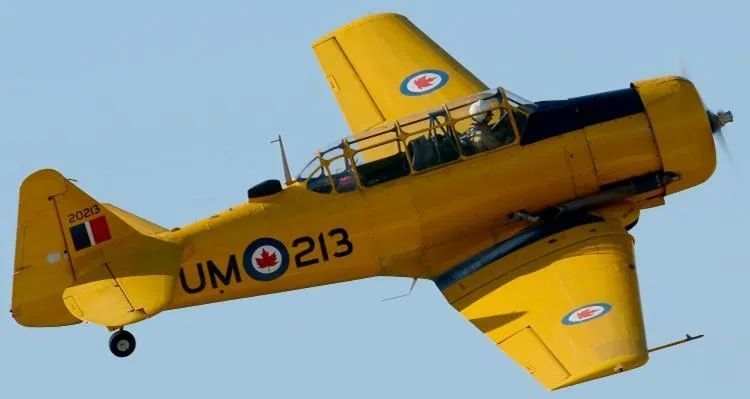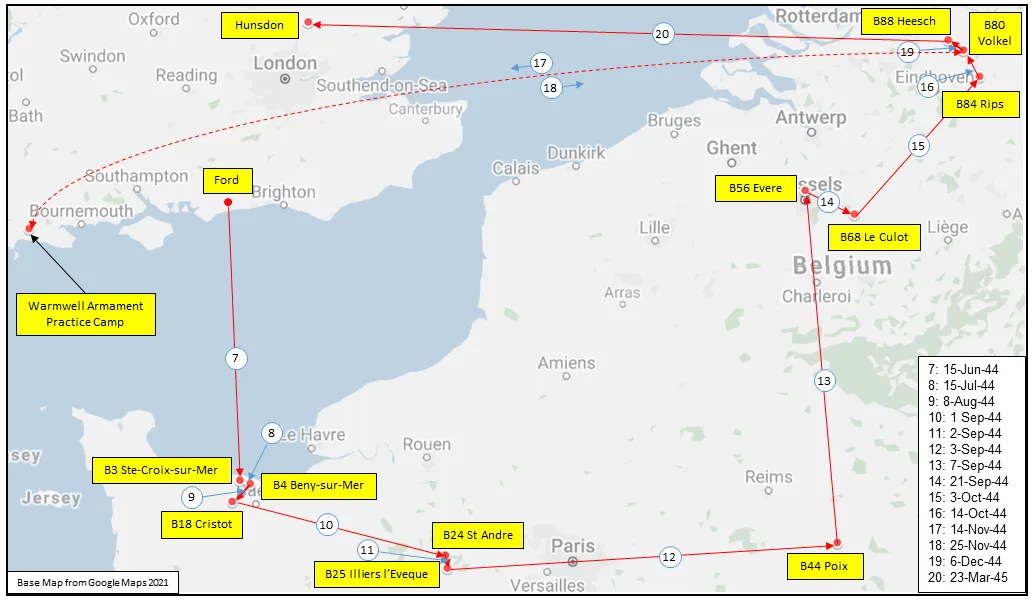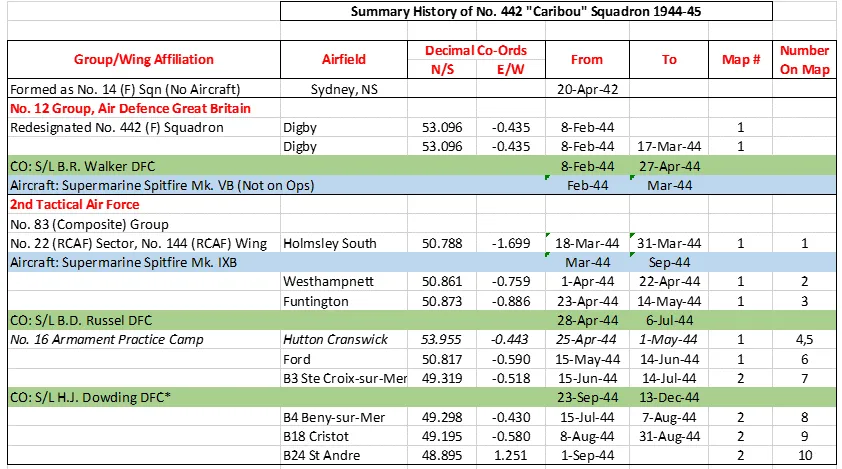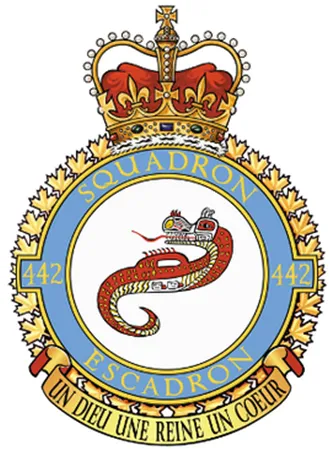Butcher, Donald Seymour (Flying Officer)
Killed in Flying Accident 1953-03-14


Birth Date: 1932-February-13
Born: Vernon, British Columbia
Son of Charles Seymour and Grace Ann Butcher of Kelowna, British Columbia. Brother of Bruce L. and Karen J. Butcher.
Home: Vernon, British Columbia
Enlistment: Vancouver, British Columbia
Enlistment Date: 1951-01-01
Service
RCAF
Unit
442 Sqn- Squadron
Un Dieu, Une Reine, Un Coeur One God, one queen, one heart
Base
Rank
Flying Officer
Position
Flying Officer
Service Numbers
130831
North American Harvard NA-26 NA-44 NA-61 NA-66 NA75 NA-76 NA-81

Canadian Warplane Heritage Museum
The North American Harvard appeared in 1937, in response to a US Air Corps proposal for an advanced trainer. The first of 50 Harvard Mk. Is ordered by the Canadian Government were delivered to RCAF Sea Island, BC in July 1939. By early 1940, the Mk. II was being assembled in California with an all metal fuselage replacing the original tube and fabric structure. 1200 Mk. IIs were supplied from US sources, until Canadian built Harvards started being produced in 1941.
In August 1938, Noorduyn Aviation of Montreal farsightedly signed an agreement with North American, to build the Harvard under licence. When the British Commonwealth Air Training Plan (BCATP) came into being in December 1939, Noorduyn received its first orders and went on to produce nearly 2800 Harvard Mk. IIBs for the RCAF and the RAF, between 1940 and 1945. In Canada, Harvard Mk. IIBs were used as advanced trainers with the BCATP at fifteen Service Flying Training Schools across the nation. They helped pilots make to the transition from low powered primary trainers, like Fleet Finch or the de Havilland Tiger Moth, to high performance front line fighters such as the Spitfire.
At the end of WW II, although the RCAF retained the Harvard as a trainer, a large number of them were sold off to civilian operators. The RCAF soon regretted this, for by 1949 the Cold War with the Soviet Union was in full swing and the RCAF urgently needed trainers again. 100 T-6J Texans were leased temporarily from the USAF and a further 270 Harvards, the Mk. IV version, were ordered from Canadian Car & Foundry, Thunder Bay. The RCAF used the Harvard Mk. IV for a further fifteen years, before finally retiring it in 1966.
A total of 20,110 Harvards were built between 1938 and 1954, 3,370 of them in Canada. Countless numbers of privately owned Harvards are still flying today.
Canadian Warplane Heritage Museum's Harvard Mk. IV was built by Canadian Car & Foundry, Thunder Bay, Ontario in late 1951. The aircraft saw service at four RCAF flying schools across the nation until it was sold to a civilian owner in 1965. It was the third aircraft to join the Museum after Dennis Bradley, Alan Ness and John Weir donated it in 1973.Canadian Warplane Heritage Museum
 Wikipedia Harvard Advanced Trainer
Wikipedia Harvard Advanced Trainer
442 Sqn Un Dieu, Une Reine, Un Coeur ("Caribou")
History of the Squadron before and during World War II (Aircraft: Spitfire VB, IXB, IXE, Mustang III)

[ Note that during WWII the squadron did not have a badge nor a motto. These were awarded later.]
No 442 (F) Squadron was formed in Rockcliffe, ON as No. 14 (F) Squadron RCAF on January 2, 1942. It originally flew Curtiss Kittyhawks with the RCAF Western Air Command due to the threat to Canada's west coast after the Pearl Harbor attack. The squadron moved to Alaska and participated on strafing and bombing missions against then-Japanese held Kiska during the Aleutian Islands Campaign. The squadron was the fifth of six home squadrons transferred overseas without its aircraft, and was re-designated No. 442 (F) Squadron RCAF at Digby, Lincolnshire, UK. on February 8 1944. It flew Spitfire aircraft in offensive and defensive operations in the preparation for D-Day, and afterwards gave close support to the ground troops. They moved with the ground troops through France, the Low Countries, and Germany. In March 1945 the squadron was re-equipped with Mustang aircraft, to provide fighter cover for long-range bomber groups. The squadron was disbanded at Molesworth, Huntingdonshire, UK on August 7, 1945.
In the course of operations, the squadron flew 4954 sorties for the loss of16 pilots, of whom 1 was killed, 9 presumed dead and 4 POWs. They accounted for 56 enemy aircraft confirmed destroyed, 5 probables and 25 damaged. In ground attacks they were credited with 909 motor vehicles, 125 locomotives and 194 trains. The squadron had 1 ace: Flight Lieutenant D.C. Gordon, DFC. The squadron amassed 1 DSO, 3 Bars to DFC, 10 DFCs, 1 Croix de Guerre (France). Battle Honours were: Fortress Europe 1944, France and Germany 1944-45, Normandy 1944, Arnhem, Rhine, Aleutians 1943. Wikipedia, Kostenuk and Griffin
Maps for Movements of 442 Squadron 1944-45
 MAP 1: 442 Squadron Movements 1944-45 (right-click on image to display enlarged in new tab) |  MAP 2: 442 Squadron Movements 1944-45 |
442 Squadron History Summary 1944-45

442 Squadron History Summary 1944-45 Page 2

History of the Squadron Post-WWII (Aircraft: Harvard, Vampire III, Mustang IV, Sabre 5, Expeditor, Otter, Cormorant)

The squadron was re-formed at Vancouver, British Columbia on 15 April 1946. It was redesignated 442 "City of Vancouver" (F) Squadron on 3 September 1952. It flew de Havilland Vampire, North American Mustang and Canadair Sabre aircraft in a fighter role until October 1958 when it was reassigned to a light transport and emergency rescue role and re-equipped with Beech Expeditor and de Havilland Otter aircraft. It was redesignated 442 Squadron. A reduction of the Auxiliary Force resulted in the squadron being disbanded on 1 April 1964.
The squadron was re-formed as '442 Communications and Rescue Squadron' on 8 July 1968, from '121 Composite Unit' (authorized 1 January 1959). The squadron is based at Comox, British Columbia , flying the CH-149 Cormorant Helicopters. The primary role of 442 Transport and Rescue Squadron is the provision of aviation resources in support of the Joint Rescue Coordination Center (JRCC) Victoria. This region consists of approximately 920,000 square kilometers of mainly mountainous terrain of Yukon and British Columbia and 560,000 square kilometers of the Pacific Ocean extending to approximately 600 nautical miles offshore, including over 27,000 kilometers of rugged British Columbia coastline. The rugged and often inaccessible terrain, severe weather, and large expanses of sparsely populated areas make the Victoria SRR the most demanding region in the country.
While approximately 80 of the Squadron's personnel strength of 200 are aircrew trades, including pilots, navigators, flight engineers, and Search and Rescue Technicians (SAR Techs), the majority are maintenance personnel, charged with keeping the aircraft at peak operational readiness. On occasions when major search operations dictate the establishment of a forward operating base somewhere else in the province, 442's maintenance personnel will deploy with the aircrew, providing servicing and repairs to aircraft on site.
 Vernon, British Columbia
Vernon, British Columbia Canadian Virtual War Memorial
Canadian Virtual War Memorial www.findagrave.com
www.findagrave.com Harvard Advanced Trainer
Harvard Advanced Trainer Harold A Skaarup Web Page
Harold A Skaarup Web Page